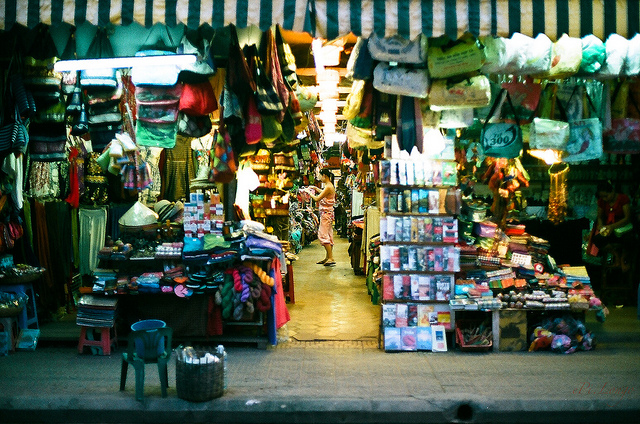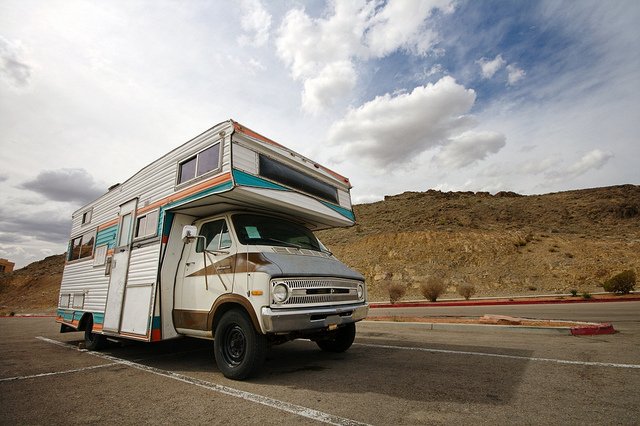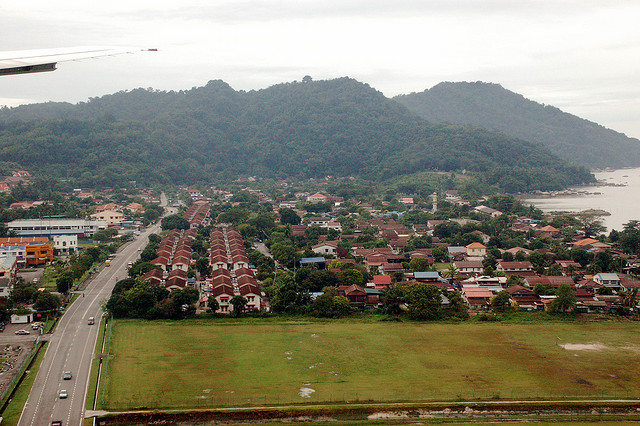Need some souvenirs to take home? Looking for that perfect wall hanging or beach sarong? Fancy a knock-off watch or handbag?
Negotiating for prices in Southeast Asia is a great social leveler–whether you’re staying poolside in a five-star resort or bunking up in a hostel dormitory, you’ll face the same advantages and disadvantages when haggling for the best price. First time travelers to Southeast Asia—no matter their budget—often feel intimidated by the bargaining process when they go to buy things. They’re concerned they won’t get a “fair” price, or feel foolish or rude when asking for discounts.
To take some of the stress out of the shopping experience, here are some tips to help you bargain for souvenirs and tours with grace and confidence. Happy shopping!
1. Smile
For many foreigners, money is no joking matter. Westerners, in particular, often believe that prices should be “fair,” and that everyone should pay the same amount for the same goods or services. As when any dearly held belief is turned on its head, this can result in hurt feelings and a desire to argue. However, getting angry over a few dollars spent on a souvenir is no way to spend your holiday. Relax, smile, and try to be friendly with the seller. If you don’t agree with the price, you don’t have to buy it—but you don’t have to be angry about it, either. It may help to think of haggling as a game, or as a cultural dance of etiquette, rather than just a transaction.
2. Know when you can’t bargain

While negotiating for goods and services is ubiquitous in Asia, there are certain places and times when you should not bargain a better price. I once saw someone trying to haggle the price of a beer at a 7-11 in Bali. That won’t fly. Most restaurants, and even food stalls, have fixed prices. If you’ve used a metered taxi, you’ll need to pay what the meter says, unless you’ve set the price before you take the trip. Once the car stops, and you’ve arrived at your destination, you’re on the hook for the total amount shown in those little red numbers. However, it never hurts to ask for a discount or a package deal, even in a glitzy, air-conditioned shopping mall. If you smile (see No. 1), staff may help you out with a “free gift” or VIP price.
3. Know what you want to pay
Many times, I’ve seen people bargaining for items with no idea of what the end price should be. Should that T-shirt you’re fond of cost the equivalent of $3 USD or $30 USD? It doesn’t really matter how much you pay for it, as long as you pay the price you’re comfortable paying. But if you start the bargaining at $30 and then a few seconds later tell the seller you actually want to pay $3, they’re going to think you’re toying with them. Do some research by asking fellow tourists or by browsing in a few shops, to see what other people are paying for similar items. If you can, ask a local who’s unaffiliated with any sellers to let you know what the “local price” is. Foreigners may not be able to bargain down to the “local price” without local language skills, but at least it will give you an idea of where you should begin and end your bargaining.
4. Be ready to give up
Salespeople the world over are shrewd judges of human nature. If they know that you are dying to purchase that pair of flip-flops, they’re much less likely to lower the price for you than if you pretend you don’t care if you get them or not. Unless it’s a dire emergency (your other flip-flops just broke and you’re wandering the streets of Siem Reap barefoot) act like you could walk away without the item in question. Note: if you are shopping for shoes while barefoot, perhaps you should just pay the asking price and be done with it. Cut feet aren’t fun to travel on.
5. Don’t rush
As in No. 4, if you rush through a transaction, the seller will figure that you’ll finally get frustrated and pay a higher price than you would if you had more time. Try not to go shopping with a narrow time frame, unless, of course, it’s an emergency.
6. Think quantity
Purchasing multiple items is almost guaranteed to get you a lower purchasing price than if you buy a single thing. Recently, in Bangkok’s Chatuchak market, I got a great deal on hand-woven silk scarves, plus two free gifts, plus a free bottle of water, because I bought 10 at a time. My Christmas shopping is done, and I had a satisfying shopping experience that both the seller and I enjoyed.
7. Learn the language, or bring a pen and paper
While many sellers of tourist stuff in Southeast Asia speak clear, easily-understood English (and several other languages, to boot), you may be able to get better prices at shops frequented by locals, and on transport deals, if you can speak the local language. Even memorizing the numbers from 1 to 20 may help you out. If this is beyond your skillset, bringing along a paper and pen (and your smile, of course) to keep track of the back-and-forth discussion will help you get the best price—and keep it.
Do you have any other tips? Let us know in the comments!





